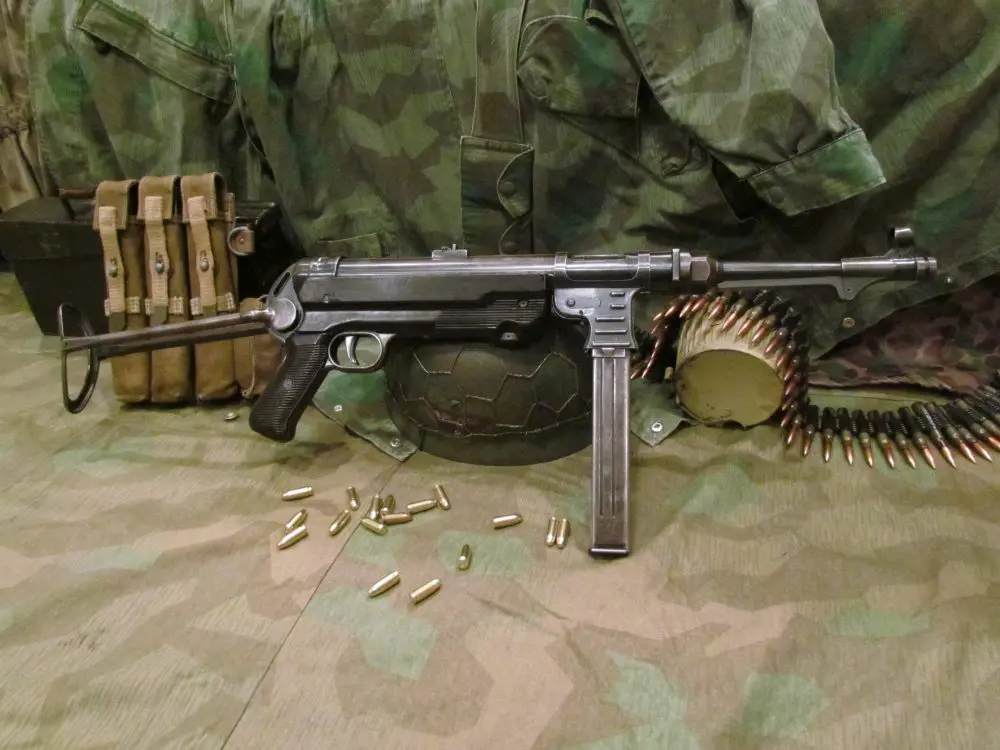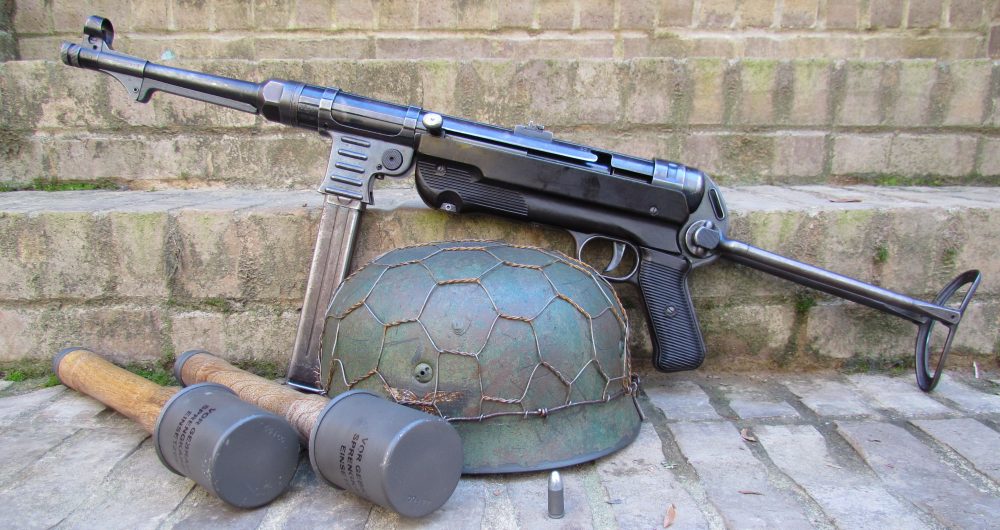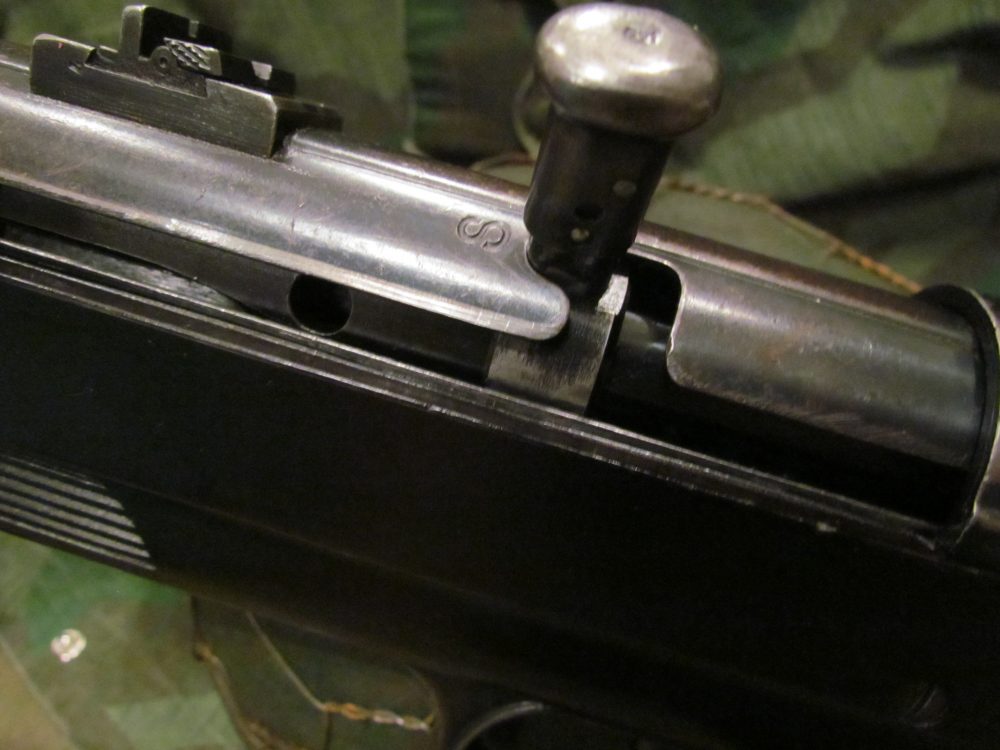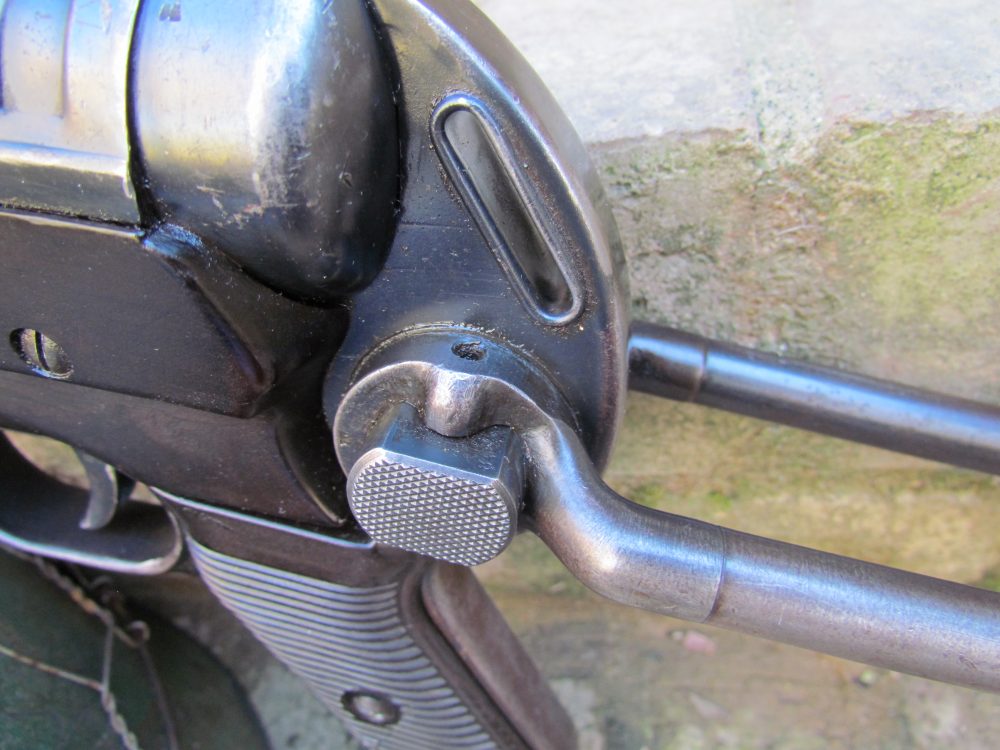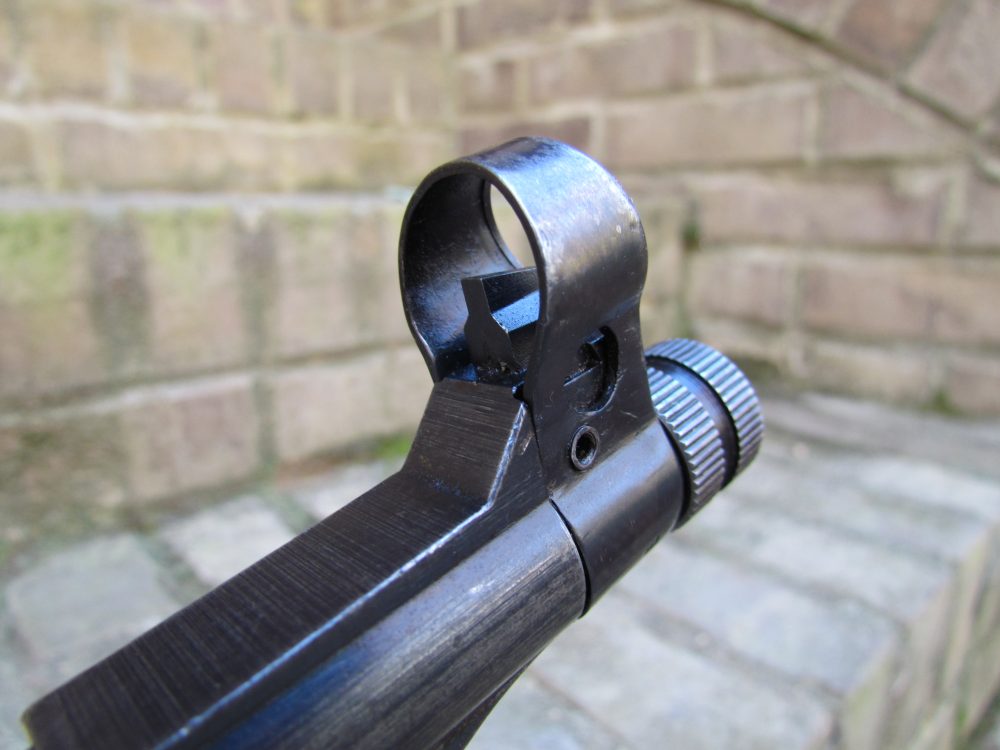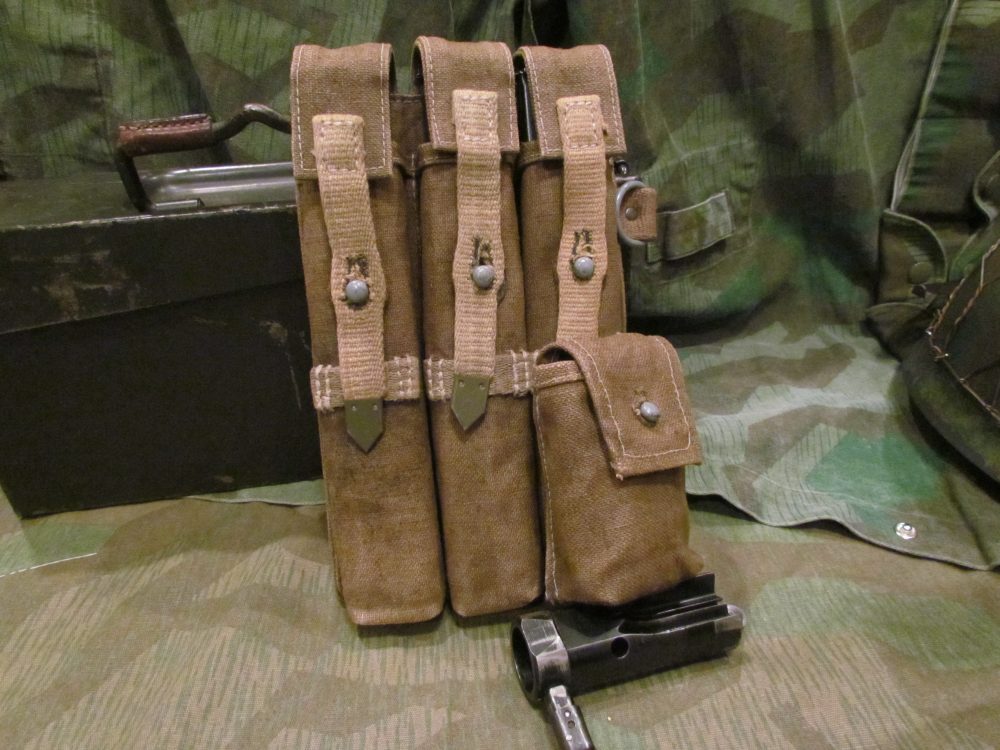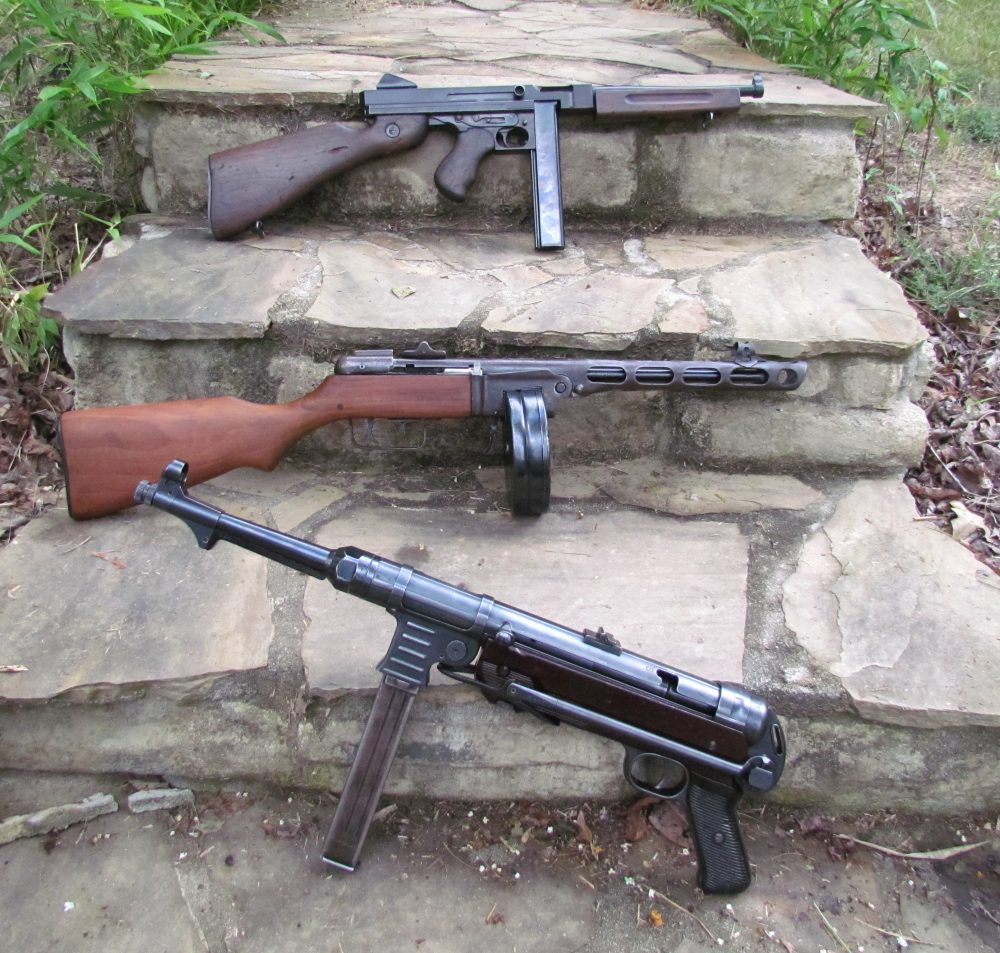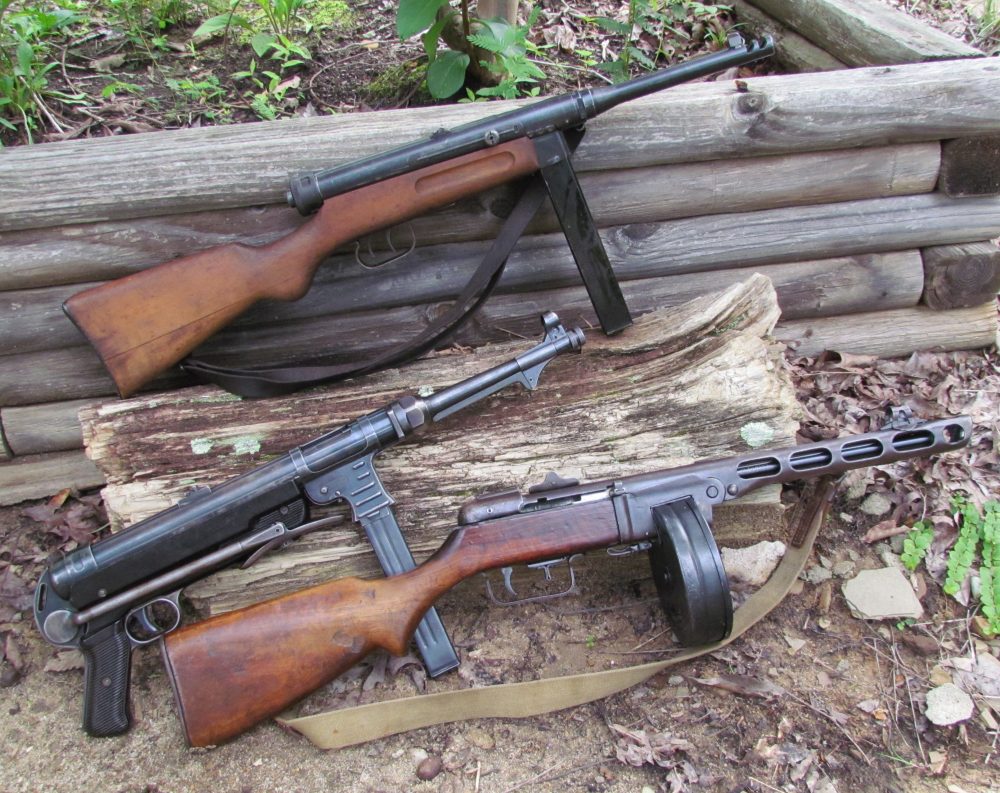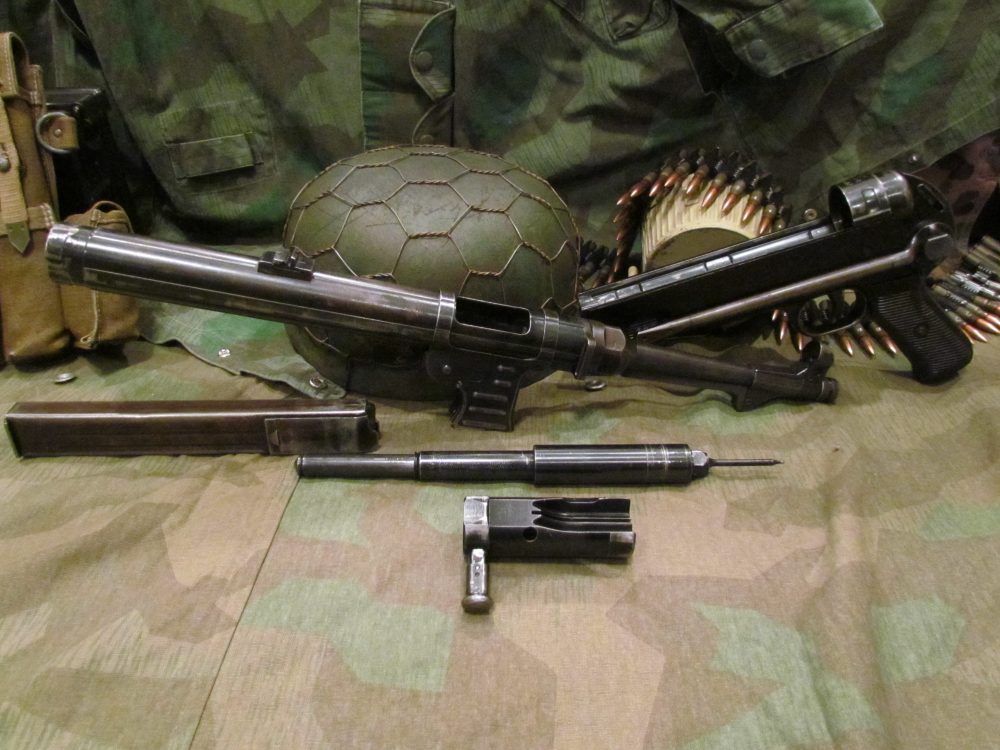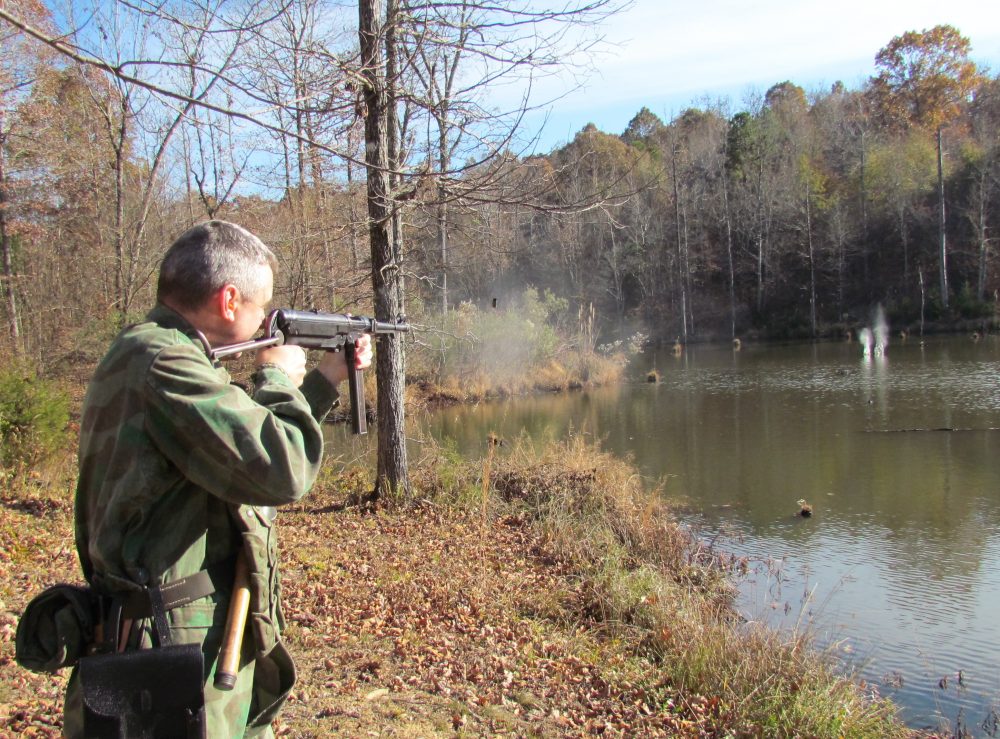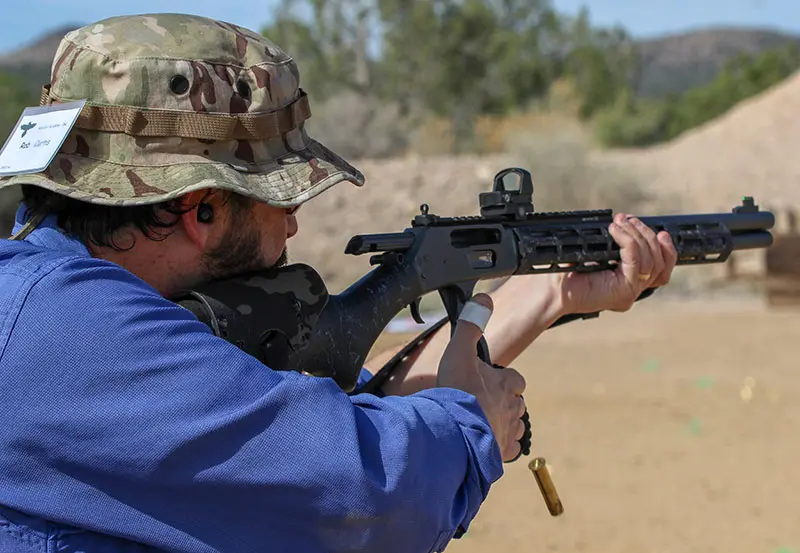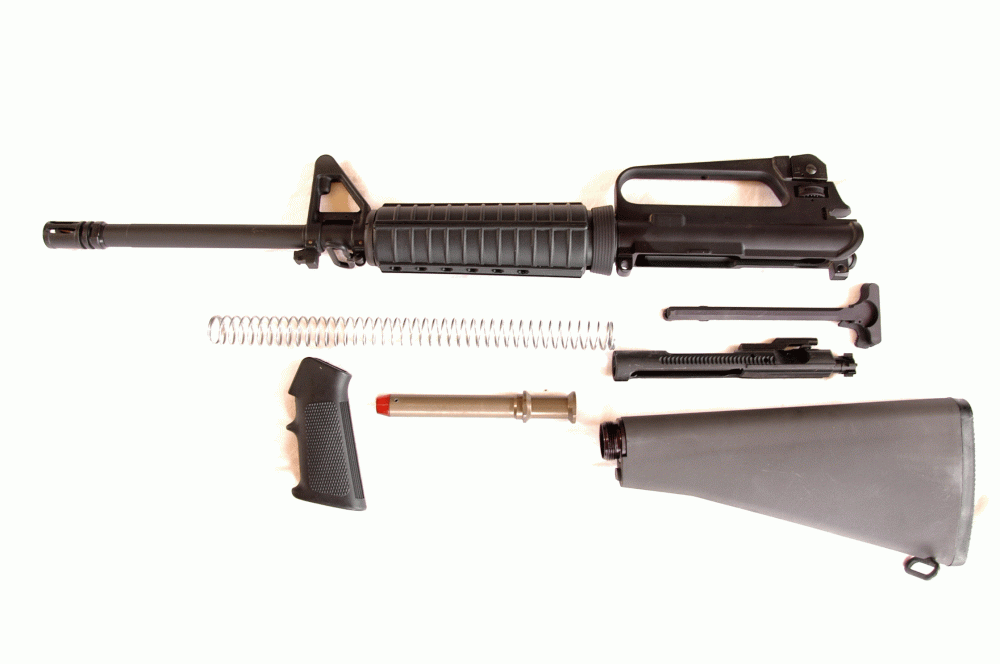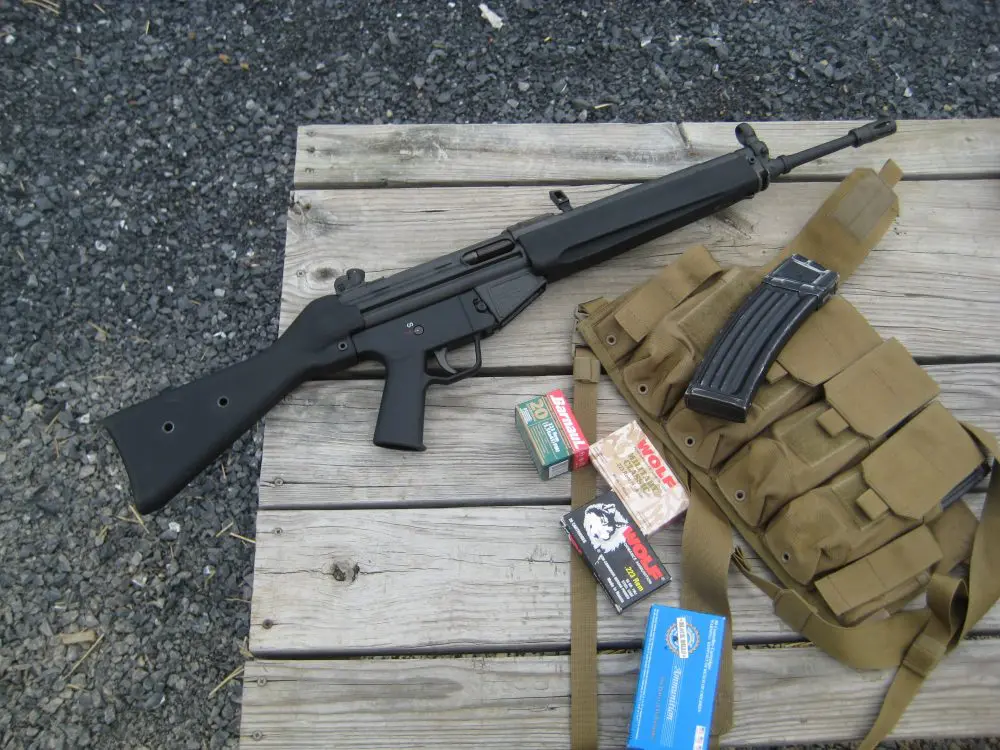Lieutenant Waverly Wray was an officer in D Company of the 505th Parachute Infantry Regiment in June 1944. He dropped into Normandy on D-Day with the 82nd Airborne Division. A former Mississippi state revenue agent whose combat exploits were the stuff of legend, Lt. Wray grew up right down the road from where I currently live. His story typifies the American warrior ethos.
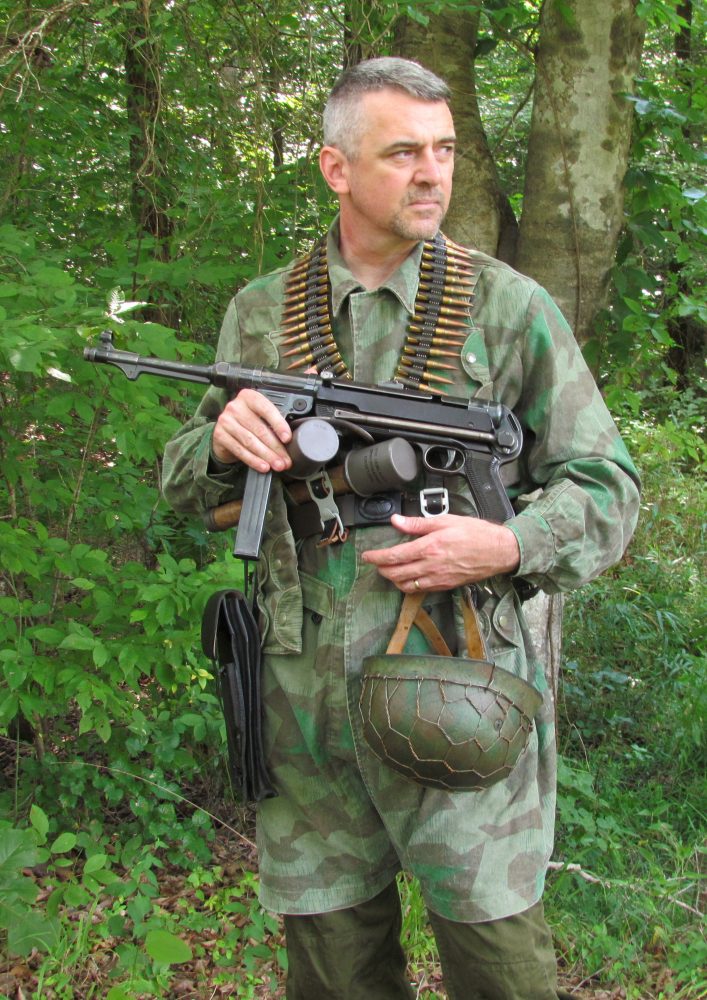
The day after the D-Day invasion, Lt. Wray surprised a group of German officers at an impromptu tactical conference. After Wray called on the Germans to surrender, one enemy soldier armed with an MP40 submachine gun sprayed a burst of 9mm rounds in Wray’s direction. Wray responded by methodically killing with his M1 rifle every German officer in attendance.
One of the German 9mm slugs punched through Wray’s steel helmet and zipped around its periphery, taking a generous 9mm bite out of his ear in the process. Wray subsequently directed mortar fire onto the German unit previously commanded by the group of officers he had single-handedly dispatched, thoroughly disrupting their planned counterattack.
Like so many young men of that terrible era, Waverly Wray did not survive the war. He subsequently fell to a sniper’s bullet on 19 September 1944, during Operation Market Garden.
Table of Contents
GENESIS
The submachine gun that removed a piece of Lt. Wray’s ear that day in Normandy was revolutionary for its time. Mislabeled the “Schmeisser” or “Burp Gun” by American GIs who faced it in combat, the MP40 was a direct descendent of Hugo Schmeisser’s World War I masterpiece but was not his design.
The original Schmeisser-designed MP18 fed from the side via a 32-round Luger snail drum and was actually the first practical man-portable pistol-caliber submachine gun used in combat. The Italian Villar Perosa saw service sooner, but the MP18 actually better defined the genre.
A pistol-caliber automatic weapon was the perfect tool for combat in the wretched conditions that defined the WWI-era trenches. The submachine gun’s portability and close-range firepower gave its user a pronounced tactical edge in combat. However, the MP18 was cut from big pieces of ordnance steel and built more like a watch than a combat weapon.
German MP40 submachine gun exemplified second-generation pistol-caliber subguns, wherein ease of manufacture figured prominently into the design.
The next generation of the submachine gun was subsequently defined not so much on the battlefield as in the factory and on the drafting table.
The MP18 became the esoterically similar MP28, which evolved into the simplified MP38. The MP38 sported such novel features as an under-folding buttstock and telescoping recoil spring assembly, but the receiver was still cut from a big piece of tubular steel. The trigger housing was an aluminum casting, and synthetic Bakelite replaced any grips that might have traditionally been cut from walnut.
The subsequent MP40 employed a more easily produced stamped sheet metal receiver and became an integral part of the iconic image of the WWII-era German soldier. The Germans produced around a million MP40s before the war ended.
MP40’s hefty nine-pound weight, combined with its diminutive 9mm cartridge and sedate rate of fire, make for a controllable platform.
DETAILS
The MP40 is familiar to anyone who has seen an Indiana Jones film. The gun is heavy—around nine pounds unloaded—and feeds from a double-stack 32-round magazine that tapers to a single-stack presentation. This magazine design was shared by both the British Sten and American M3 Grease Gun and subsequently required a dedicated magazine loader.
The barrel is threaded, though there were no general-issue muzzle attachments beyond a seldom-used blank adaptor to take advantage of this feature. The notched bar underneath the barrel was designed to rest on the edge of an armored vehicle and helped keep the muzzle outside the halftrack in action.
Primary safety on MP40 is bolt retention slot that locks bolt open to the rear.
This may seem a bit superfluous, but I once saw a young American Infantryman fire his M203 into a defensive berm two feet from his head when he rested the barrel of his rifle on the parapet without clearing his under-barrel grenade launcher. The liberal coating of marking powder the young man received from the training round he fired into the side of his fighting position proclaimed his ineptitude to all in attendance.
The front sight of the MP40 is fully hooded and the rear sight is flip adjustable for 100- and 200-meter ranges. The underfolding stock incorporates a pivoting buttplate and served as the obvious inspiration for the subsequent version used on folding-stock Kalashnikov rifles. The rear sling attachment point is ambidextrous, and the front loop can be configured on either side.
Underfolding stock served as obvious inspiration for similar folding stock on Kalashnikov series rifles.
The MP40’s unique telescoping recoil spring is what makes the gun so remarkably smooth in action. The spring assembly incorporates a series of pressed steel cups that telescope into themselves as the gun cycles. Not even the esteemed MP5 is smoother.
The trigger/buttstock/fire control group on the MP40 is a large pressed steel assembly that locks into the receiver with a twist. A safety notch secures the bolt to the rear and most, but not all, versions also incorporated a bolt handle that can be pressed in to lock the action in position when the bolt is closed.
The gun fires from the open bolt using the classic advanced primer ignition system typically found on subguns of that era. Parts are usually finished in a rich blue, and just about every single widget on the gun has its own matching serial number.
Front sight on MP40 is protected by a heavy hood.
German soldiers, Fallschirmjagers, and grenadiers who were issued the MP40 typically received a pair of three-cell magazine pouches as well. One of the sets included an ancillary pouch for a magazine loader. The issue sling is a fairly thin leather affair, slide adjustable via a locking buckle.
There was even a rare variant that incorporated a cumbersome side-by-side dual-magazine arrangement allowing 64 rounds as a counter to the prodigious 71-round drum magazine of the Soviet PPSh submachine gun.
A similar weapon to the MP40, incorporating a wooden stock and the fire-control parts from the earlier MP28, was also produced in limited quantities as the MP41.
Standard ammunition load for German soldiers issued the MP40 was seven 32-round magazines. Accessory pouch carried requisite magazine loader.
LET’S RETIRE TO THE RANGE
The MP40 is indeed heavy, and lugging the gun around for long periods can get tedious. Loading those magazines is a chore, but the issued loader works well in practice. But once you light the gun up, the appeal becomes apparent.
The MP40 fires full-auto only, but its rate of fire is remarkably sedate. To those of us who cut our professional teeth on M16s, AKs, and MP5s, all of which cycle between 600 and 800 rounds per minute, the 500 rpm of the MP40 is comparatively comatose. Two- and three-round bursts are painless, and full magazine dumps molest the point of aim to an inconsequential degree.
MP40 submachine gun (bottom) personified Germany’s struggle during World War II, just as did Soviet PPSh (middle) and American Thompson (top).
With the stock extended and proper technique, the MP40 will keep an entire magazine in a pie plate at reasonable subgun ranges. After a little practice, the MP40 maneuvers nicely from the hip as well. Hip shooting is an underappreciated art these days, but a 101st Airborne Company Commander who fought all the way across Europe in WWII once opined that his troopers who were not adept at hip shooting did not last long in combat. Who am I to question a warrior of his pedigree?
When configured on a sling, the MP40 will fill a room with a single long burst fired from the hip. In the days before embedded reporters and ubiquitous camera phones, collateral damage was not quite as well documented as it is today. We now demand greater precision from our tactical tools.
Even at nearly 75 years old, the MP40 used for this article was monotonously reliable. Magazines needed to be culled a bit to find the ones whose springs were still up to the task, but the old girl just would not slow down. Cleaning and maintaining the gun in the field are not chores. The MP40 strips without tools and employs that legendary Teutonic standard of workmanship throughout.
The battlefield effectiveness of the MP40 was universally respected and the guns were used in action by all combatants whenever available. Members of the British 6th Airborne during Operation Market Garden were known to discard their own weapons in favor of the iconic German submachine gun whenever possible. These Paras could feed their captured guns via the same 9mm ammunition used in their Stens.
After a few days in action, MP40s were sprinkled liberally throughout the British ranks, apparently with the tacit blessing of local commanders.
German MP40 (middle), Italian Beretta 38/42 (top), and Soviet PPSh (bottom) demonstrate various approaches to submachine gun design exhibited by some of major combatants during WWII.
MUSINGS
It has been said that if we took every cent spent on national defense in America from the end of the Cold War up until the fall of the Berlin Wall, we could raze and rebuild every manmade structure in the U.S. It is a shame that the most innovative products a nation typically produces are implements of death and destruction, but I fear that is our nature.
In the case of the German MP40 submachine gun, this gleaming gem of industrial mayhem defines the sweet spot between tactical utility and ease of manufacture. During WWII, body armor was impractical, so the diminutive 9mm round was more than adequate for close-range engagements. Of all the remarkable contrivances devised to throw Georg Luger’s classic Parabellum projectiles, nothing of its era equals the MP40 for elegance and controllability.
German MP40 is simple to maintain in the field. It breaks down into major subcomponents easily and without tools.
The MP40 ranked right alongside the Luger pistol as the alpha trophy for American troops liberating Europe from beneath the boot of Nazi tyranny. MP40s are treasured additions to any advanced gun collection today. A decent transferable example costs as much as a car, and parts get harder to find every year. But for the gun nerd fortunate enough to avail himself of an afternoon on the range with an MP40 and a proper supply of 9mm ammunition, it becomes readily apparent what all the fuss is about.
From German Panzer Grenadiers to British Paras to American Dogfaces and silver-screen heroes like Indiana Jones, the MP40 is the archetypal German military firearm.
In action, German MP40 is eminently controllable. Gun’s imposing weight, forward center of gravity, and light recoiling cartridge all conspire to defeat muzzle rise during long bursts.
Special thanks to www.worldwarsupply.com for the German Fallschirmjager gear used in this article.
Will Dabbs grew up in the Mississippi Delta and has a degree in Mechanical Engineering from the University of Mississippi. He is Airborne qualified and accumulated 1,100 hours flying UH-1H, OH-58A/C, CH-47D, and AH-1S helicopters. After eight years on active duty, Major Dabbs left the Army for medical school. He currently works in his own medical clinic and maintains a licensed 07/02 firearms manufacturing business building sound suppressors. He has written commercially on the subjects of firearms, medicine, and survival for more than 20 years.
